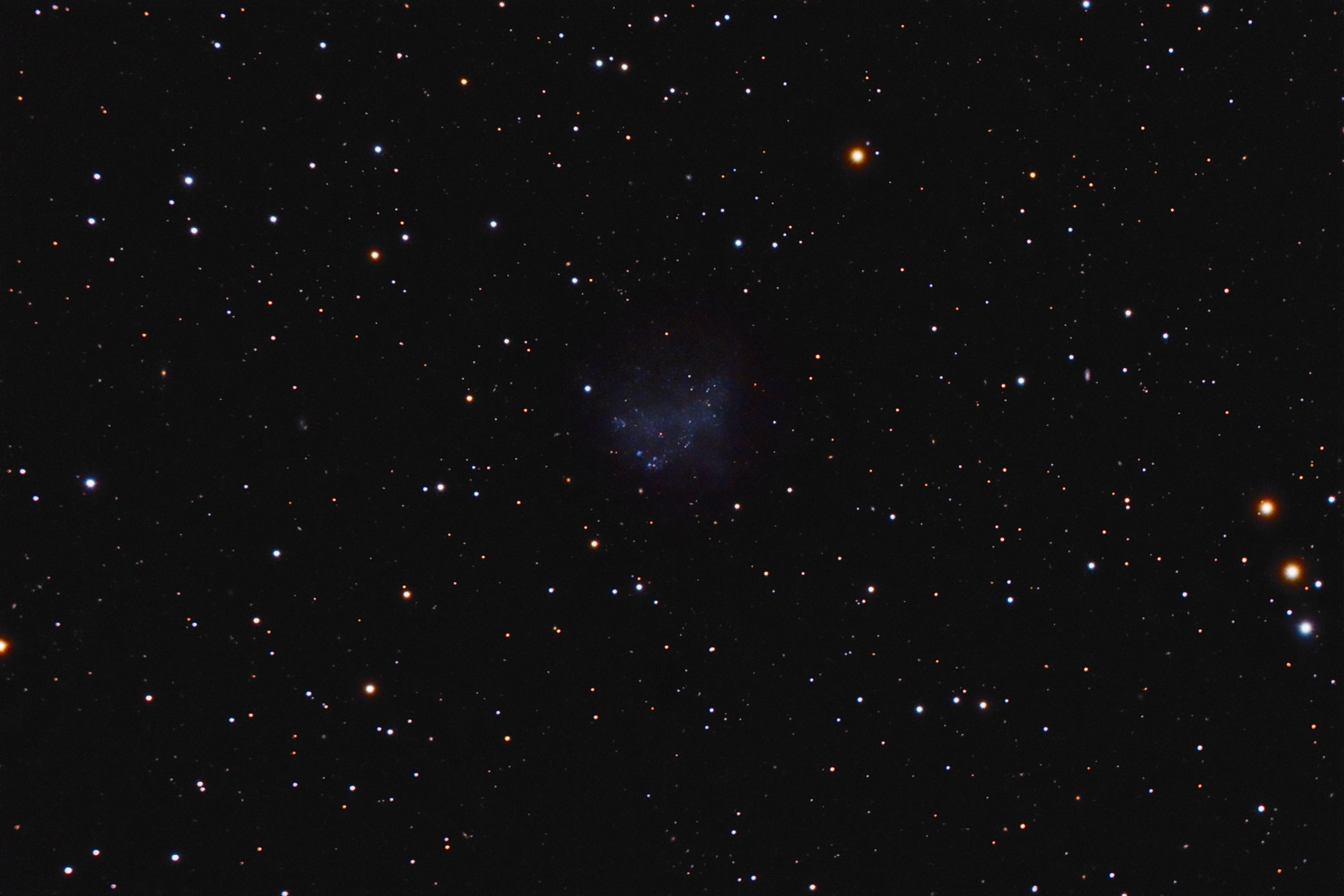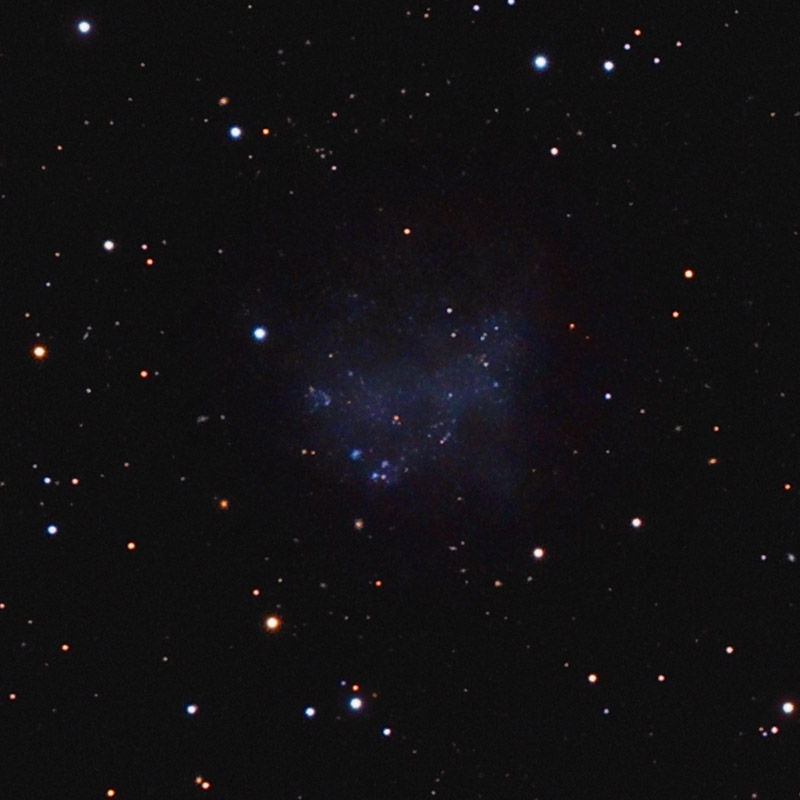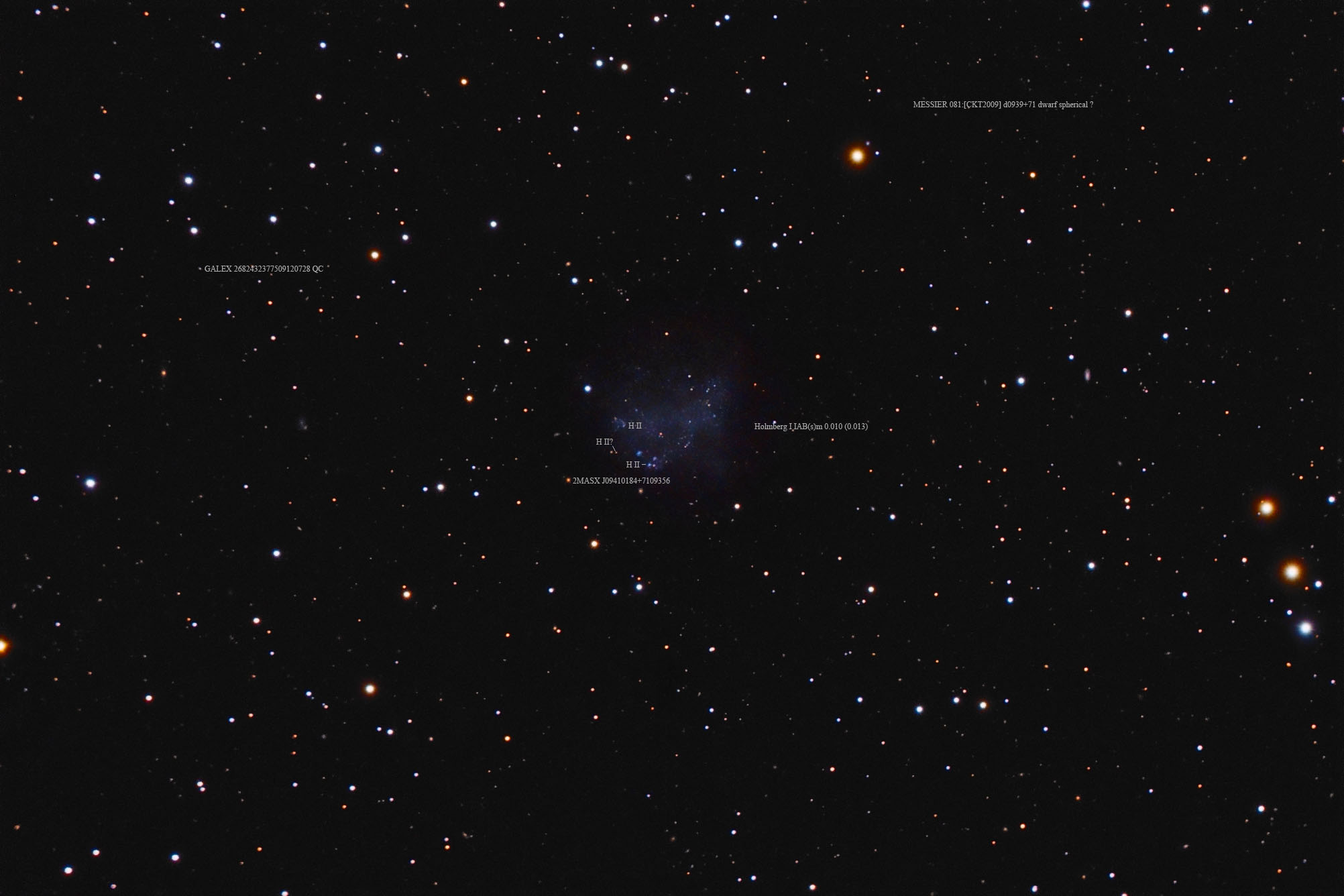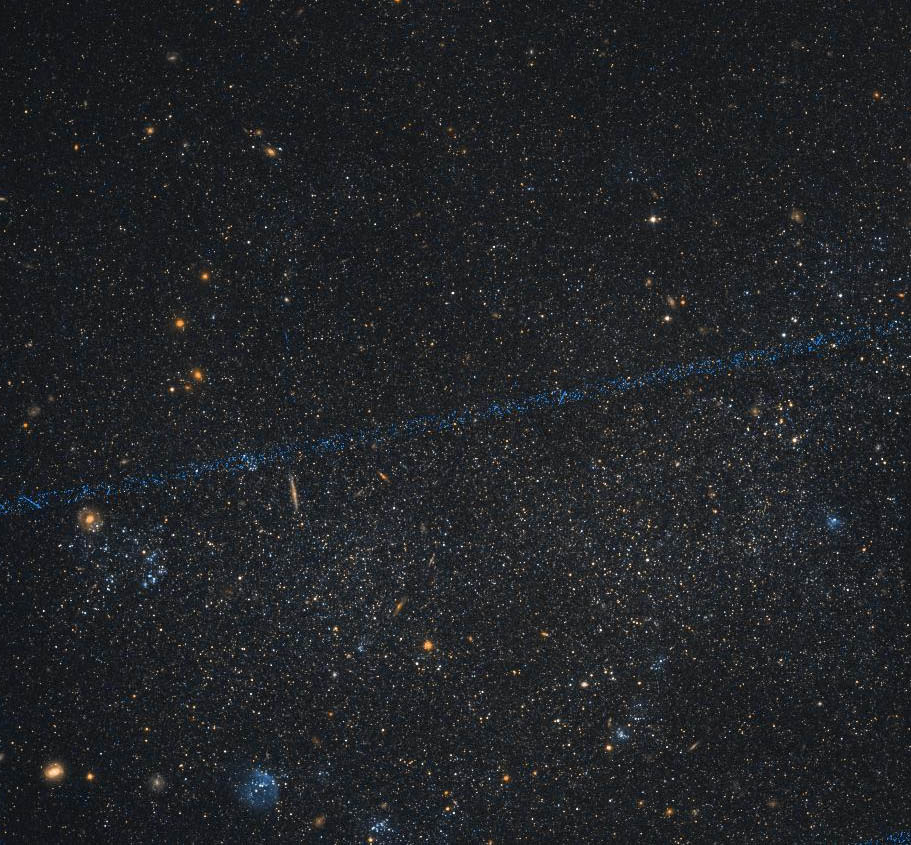Object name: HOLMBERG IDesignation(s): HOLMBERG_I, Holmberg I is the first of 9 dwarf galaxies in Holmberg's list of dwarf galaxies, most of which lie somewhat in the area of M 81. Holmberg 1 lies about 2.5 degrees northwest (330°) of M81 and is considered part of the M81 group. It is a very blue, low surface brightness dwarf with little HII emission according to papers I read. That surprised me as the HST image shows some nice nebula in it. Then I noticed the filters used by the HST, Green (centered on the same frequency as most green lasers, 555nm) was assigned to blue with near infrared, 814nm, was assigned to red. Thus the blue nebulae were seen in green light rather than H alpha red. They show as blue fuzzy "stars" in my image and are quite weak in red light. I need to revisit this one in H alpha sometime.
The redshift distance is 10 million light-years but this is highly unreliable so close in. Still, the non-redshift values show it only slightly further. They range from 12.5 to 19.2 million light-years. Three values were derived from the HST images, some of which I used for my rendering. Those are in quite close agreement with the latest having the value of 13.0 million light-years which I show on the annotated image. An older paper puts it at 12 million light-years. New data supports the 13 million light-year distance. Otherwise, the paper is interesting but rather deep. http://iopscience.iop.org/1538-3881/122/6/3070/pdf/1538-3881_122_6_3070.pdf
I got quite a shock when I had NED list the objects of all types in the field with redshift data. It returned only Holmberg I. So I asked for all galaxies or galaxy clusters and quasars or quasar candidates. That returned only three others! One is barely visible on the FITS stack but almost invisible on the processed TIFF file. After JPG compressing it is gone unless you hype the brightness greatly. It is listed as being possibly a dwarf spherical galaxy. Its position is somewhere in a 5 arc second circle but that does include the faint fuzz patch I've marked. The other galaxy right near Holmberg I is bright but near star-like until you look at its PSF. One star is listed as a strong ultraviolet source by the Galex satellite and is considered a candidate quasar though with no redshift and little else I could find on which to make this claim.
When I asked for all objects it did return 3 HII regions. Two agree with tiny blue "stars" in the galaxy in my image.
Of the 9 Holmberg galaxies, I'm yet to catch VI. It is at -21.3° so too low unless I have a one in a thousand night. Holmberg II is filed under Arp 268 and Holmberg IX is in my image of M81 if you are looking for those two. The rest are under their Holmberg designation.
You can read more about Holmberg I at this PDF link. It gets a bit deep and precedes the later distance estimates I used. http://iopscience.iop.org/1538-3881/122/6/3070/pdf/1538-3881_122_6_3070.pdf It indicates the galaxy is undergoing ram pressure stripping.
14" LX200R @ f/10, L=4x10' RGB=2x10' STL-11000XM, Paramount ME Related Designation(s):11HUGS 157, 2XMM J094034.8+711047, 2XMMp J094034.7+711047, CGCG 0936.0+7125, CGCG 332-057, CXO J094035.1+711046, DDO 063, HIJASS J0940+71, HOLMBERG I, KDG 057, LGG 176:[G93] 001, MAILYAN 044, MCG +12-09-059, PGC 027605, SSTSL2 J094035.08+711046.9, UGC 05139, UZC J094034.5+711054, [RC1] A0936, [RC2] A0936+71, [SPB93] 106, | | 


